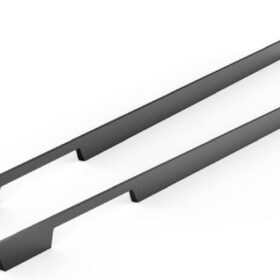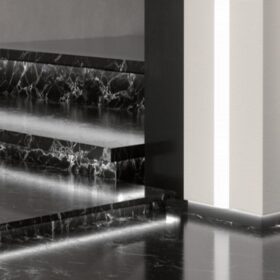Enhancing Functionality with Ergonomic Aluminum Profiles
Aluminum profiles are versatile building materials used in various industries due to their exceptional strength, durability, and adaptability. By incorporating ergonomic principles into their design, aluminum profiles can be transformed into functional components that optimize user comfort and productivity. This article explores how enhancing functionality with ergonomic aluminum profiles revolutionizes various applications.
Improved Workspace Ergonomics
Ergonomic aluminum profiles enable the creation of workstations that promote proper posture and reduce the risk of musculoskeletal disorders. Adjustable desks, monitor arms, and keyboard trays made from ergonomic aluminum profiles allow users to customize their workspace to fit their specific needs. By adjusting the height of the desk, positioning the monitor at an optimal level, and ensuring the keyboard is at a comfortable angle, users experience reduced strain on their neck, shoulders, and back.
Enhanced Accessibility
Aluminum profiles’ adaptability makes them ideal for creating accessible spaces that cater to individuals with disabilities. Ergonomic aluminum ramps provide smooth transitions between different levels, ensuring easy and safe access for wheelchairs and mobility aids. Ergonomic door handles and rails designed with aluminum profiles offer comfortable and secure gripping surfaces, making it effortless for individuals with limited mobility to open doors and navigate spaces.
Increased Productivity
Ergonomically designed aluminum profiles contribute to increased productivity by reducing fatigue and improving focus. Standing desks made from ergonomic aluminum profiles encourage movement and reduce sedentary time, promoting better circulation and increased alertness. Ergonomic chair bases and armrests provide proper support and reduce discomfort, enabling users to work longer without experiencing fatigue or pain.
Innovative Medical Devices
In the medical field, ergonomic aluminum profiles play a crucial role in the design of innovative medical devices. Lightweight aluminum profiles are used to create patient transfer equipment, such as wheelchairs and stretchers, that are easy to maneuver and provide maximum comfort for patients. Ergonomic aluminum profiles also enable the production of adjustable hospital beds, operating tables, and medical carts, ensuring optimal positioning and ease of use for healthcare professionals.
Sustainable and Durable Solutions
Ergonomic aluminum profiles offer sustainable and durable solutions for various applications. Aluminum is a recyclable material that can be reused multiple times, reducing waste and promoting environmental conservation. The inherent durability of aluminum profiles ensures that ergonomic solutions made from them can withstand heavy use and maintain their functionality over an extended period.
Conclusion
Enhancing functionality with ergonomic aluminum profiles transforms these versatile building materials into essential components that optimize user comfort, productivity, and accessibility. From improved workspace ergonomics to innovative medical devices, ergonomic aluminum profiles continue to revolutionize various industries by creating solutions that promote well-being, efficiency, and sustainability.
-
2024-11-29Top Trends in Modern Kitchen Cabinet Pulls for 2024
-
2024-11-28The Ultimate Guide to Modern Kitchen Cabinet Pulls- Materials, Styles, and Tips
-
2024-11-27Elevate Your Kitchen Design with These Must-Have Modern Cabinet Pulls
-
2024-11-26Sleek and Stylish- The Best Modern Kitchen Cabinet Pulls for a Contemporary Look










